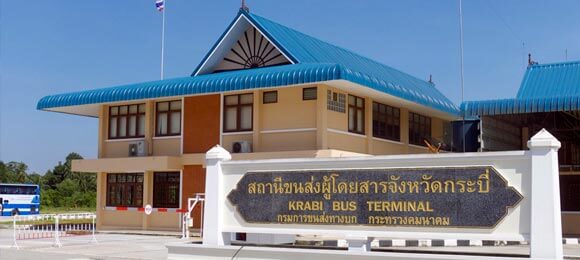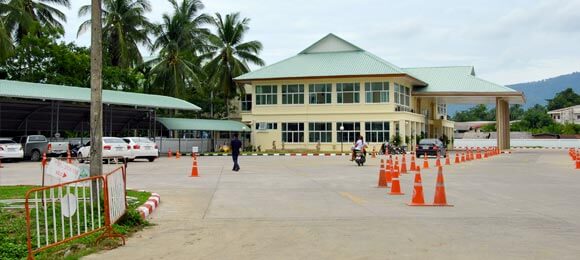 Diving in Surin Islands
Diving in Surin Islands
Surin Archipelago in the Andaman Sea is one of the most beautiful and diverse dive destinations in Thailand. Richelieu Rock, its most famous dive site is regarded as one of the best dive destinations in the world, according to the National Geographic Society, a "must" for divers and snorkellers. Located approximately 60 Km off the coast of Phang Nga Province, Southern Thailand, the archipelago consists of five small pristine islands, which were declared national park on July 9, 1981, and named "Mu Ko Surin Marine National Park". The park covers an area of approximately 141.25 square kilometres of which 80% are ocean. The main islands of archipelago are Koh Surin Nuea and Koh Surin Tai, which are separated only by 200 meters of shallow sea, at low tide can walking from one to other. The other three small islands are rocky outcrops, which just protrude from the ocean with some dwarf trees. They are: Koh Ree, also known as Koh Chi or Koh Satok, Koh Klang aka Ko Pachumba and Koh Khai aka Torinla Island. The two largest islands have many bays with white sand beaches and the typical vegetation subtropical. Limited areas of mangrove forests are located in the brackish waters of Mae Yai Bay in Koh Surin Nuea. The Park Headquarters on the mainland is located in the small village of Ngan Yong in Tambon Khura, along the coast of Khura Buri District the nearest access to the Park. The reception house of Park HQ on archipelago is in Chong Kaad Bay on Koh Surin Nuea, where the boats arrive and depart. Here are also a campsite, few bungalows, laundry services, a small shop, a restaurant, toilets and shower facilities. Mai Ngam Bay is the other most known bay of main island, where is another campsite with toilets, shower facilities and a cafeteria with limited choice of meals. On Koh Surin Nuea and Koh Surin Tai there are two small communities of ethnic minority Moken, also known as Chao Ley or sea gypsies. The population of this particular ethnic group is about 150 people. The area where live the sea gypsies on Koh Surin Tai is the only one that can be visited on island, which is off limits to visitors for all the rest of its land surface.Read More
 Marine Life & Reefs
Marine Life & Reefs
The crystal clear waters of Surin Islands are full of marine life. Its stunning coral reefs and the surrounding waters are home to almost all marine species in the Andaman Sea. The insulation offshore of islands and the presence of large shoals of plankton and baitfish make the Surin Islands centres of attraction for fishes and invertebrates. Beautiful colourful anemones, sea fans and coral provide shelter to Clownfish, Damselfish, Anemonefish, Surgeonfish, Harlequin Rasbora and Seahorses. Between cracks and crevices there are a huge variety of invertebrates like Octopus, Crabs, Shrimps, Lobsters, Zigzag Clams and Oysters. The reefs are a perfect habitat for Nubibranchs, Glassfish and other baitfish, which it is why you will see so many predators here, such as Lionfish, Scorpionfish and Moray Eels. Near the reefs swim Turtles, Flying Perch, Ornate Ghost Pipefish, Butterflyfish, Cuttlefish, Squid and Emperor Angelfish. Near the seabed are resident large Groupers, Leopard Sharks, Black Tip and White Tip Reef Shark. In the surrounding waters swim in circle large shoals of pelagic fish, such as Amberjack, Dorado, Napoleon Wrasse, Barracuda and Trevally. In the Surin Islands there are frequent sightings of Dolphins, Black Marlin, Kawakawa Tuna, Dogtooth Tuna as well as two largest pelagic species of the oceans id est Whale Shark and Manta Ray. Aside Richelieu Rock, which is a submerged limestone rock, the coral reefs of the Surin Islands are mostly constituted by large granite boulders covered with a huge variety of corals and anemones. Underwater the scenery is really fantastic with beautiful gardens of colourful anemones, barrel sponges, gorgonian sea fans, soft and hard coral in the most varied forms, like deer staghorn, leaves and mushrooms. As well as for the Similan Islands, the impact of the 2004 Tsunami on the Surin Islands was much lower than expected; only a third of the corals were heavily damaged. Consequently there has been no significant change in its coasts and coral reefs.Read More
Basic Information
Access: Liveaboards and day trips from Khao Lak. Distance: 95 km west of Khao Lak, 4 hours trip by cruises or 2 hours by speedboats. Recommended length of stay: 4-6 days. Water Temperature: Between 26-29° C. Surface Conditions: Calm to slightly choppy. Current: Moderate to strong. Diving Depth: Between 5-35 metres. Visibility: Ranges from good to excellent between 15-40 metres. Experience Level: Suitable to intermediate and advanced divers. Please note: Park is officially open to the public from 15 October until 15 May, but dates may vary each year.
Dinamic Map
 Access to Surin Islands
Access to Surin Islands
Surin Islands sit in open sea off the coast on Andaman Sea, about 60 Km from the west coast of Phang Nga Province. A few kilometres north there is the Myanmar sea border and about 100 Km south is the Mu Koh Similan National Park. The nearest access to the islands is Khura Buri, a small coastal town 90 km north of Khao Lak, the famous tourist resort in Phang Nga Province. From Kara Bhuri's pier departs all daily excursions for snorkelling to the Marine Park, the trip take about 70 minutes by speedboats. The cost of daily excursion is between 2,600 and 3.500 THB, and includes the transfer by minibus from the resorts of southern Thailand, like Khao Lak, Phuket or Krabi. The main access to Surin Park for enthusiastic divers is Thap Lamu, a small fishing village located just 15 km from Khao Lak. From its docks depart the majority of diving liveaboards and speedboats to the Similan and Surin Islands, distant respectively 65 and 95 Km. Given the distance from the mainland these diving destinations are better explored with multi-day cruises on boats adapted for diving, however it is also possible to dive there with a day trip with speedboats. Usually the diving cruises provide first dive to the Similan sites and then reach Richelieu Rock, the most famous site in the Surin Islands.
During the cruise between the two archipelagos are planned diving at Koh Bon e Koh Tachai. The dive cruises and speedboats run daily from the middle of October to the middle of May, during the monsoon season both Parks are closed for safety. A lot of Scuba Centres in Khao Lak, Phuket or Krabi organize the diving excursion to the Surin and Similan Islands. The cost of a one-day trip from Thap Lamu ranges from 5,500 to 6,500 THB depends on the number of dives planned throughout the day, usually 2, and the selected sites. The majority of these tours include the roundtrip by speedboats from Thap Lamu docks, tanks, weights and weight-belts, lunch buffet, tropical fruit, drinking water, assistance by dive guides and insurance; are excluded personal diving gear and Nitrox. Pick-up from hotel normally is at 06:00-07.00 a.m., and the return is at 18.00-20.00 p.m.
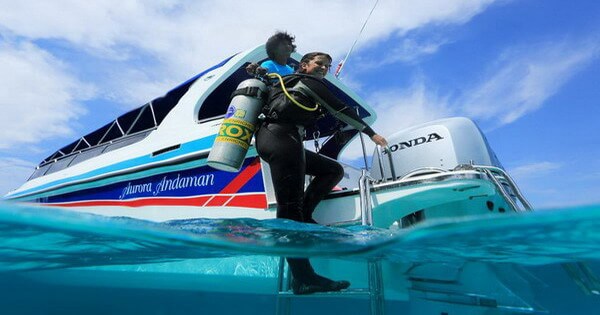
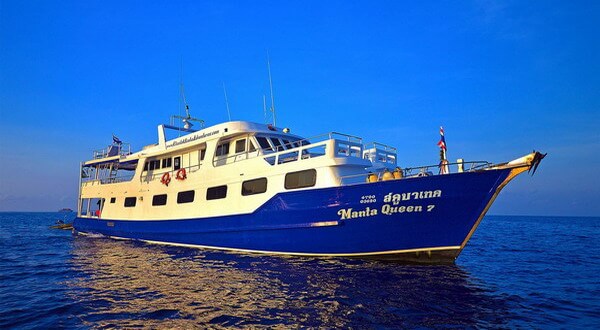
The multi-day cruises to the Surin and Similan are the best way to explore these diving paradises. Comfortable dive boats allow you to dive in these wonderful sites for several days with multiple daily diving. Cruises are available by a minimum of 4 days / 3 nights up to a full week. The costs depend on the chosen boat, by diving equipment and services on board, indicatively ranging from 6,000 to 10,000 THB per day per person. Discounts are provided for cruise passengers who do not make diving. The price includes the transfer by minivan from your hotel or airport to the piers, accommodation in cabins, tanks, weights and weight-belts, assistance by dive guides, insurance and all meals on board; are excluded personal diving gear, Nitrox and Marine Park fees, 1,800 THB diver/1,000 THB non diver. Park is officially open to the public from 15 October until 15 May, but dates may vary each year.
 Dive Sites and Diving Season
Dive Sites and Diving Season
The world-famous Richelieu Rock is doubtless the most important of all dive sites in the Surin Islands. The site is frequented by divers especially to admire the two largest pelagic species of the oceans, the Whale Shark and Manta Ray. Other popular dive sites around the Surin Park include Bon Soong Wreck, Koh Khai, Koh Chi and the impressive pinnacles off Koh Bon and Koh Tachai, which are in fact part of Similan Park but nevertheless are closer to the Surin Islands. All along the west coast of southern Thailand, where lie the Surin Islands, the best conditions exist from November to April, when surface conditions are generally calm. Visibility can easily reach over 35 metres and the water temperature is between 26° and 30° C. From late May to October, the monsoon winds swell the surface of Andaman Sea reducing the visibility of more than 30%, this makes it impractical and dangerous to diving and the Park is therefore closed for safety from 15 May until 15 October, but dates may vary each year.
Richelieu Rock aka Hin Plo Naam
The world-famous Richelieu Rock is without doubt the best diving site in Thailand, and one of the best in the world according to the National Geographic Society. Discovered by Jacques Cousteau, Richelieu Rock is a submerged limestone pinnacle in open sea between the Surin Islands and the mainland. Indeed, despite many people thinks it is part of the Similan Islands, the site is part of the Mu Ko Surin National Marine Park. The Richelieu Rock is located 17 Km east-southeast of Koh Surin, 36 Km west-northwest of the mainland at Suk Samran district, 90 Km north of Koh Ba-Ngu, the northernmost of the Similan Islands and 80 Km northwest of Khao Lak docks. Divers can get to Richelieu Rock with diving day trip by speedboat from Khao Lak, about 2 hours boat ride, or with a liveaboards to the Similan and Surin Islands. The topography of the site consists of a single awesome pinnacle, which almost reaches the surface at low tide. From the sea surface the limestone cliffs descend up to 50 metres of deep, a dramatic drop off breathtaking. The rock surface is covered with anemones, sea fans, barrel sponges and soft corals of all kinds. The sheer diversity of marine life in Richelieu Rock is amazing. Here you will find a huge density of all marine species that the Andaman Sea can offer including Moray Eels, Lionfish, Scorpionfish, Anemonefish as well as Emperor Angelfish, Seahorses, Ornate Ghost Pipefish. Around the pinnacle swim in hunting large shoals of pelagic fish like large Snappers, Bigeye Trevally, Fusiliers and Chevron Barracuda. In the deep waters near the seabed can be seen Groupers, Stingray, Nurse Sharks, Leopard Sharks and occasionally White Tip Reef Shark. Despite so much marine life the site is mostly frequented by world divers especially to admire two of largest pelagic species of the oceans id est Whale Shark and Manta Ray. Richelieu Rock is famous as one of the best places in the world to dive with the majestic Whale Sharks. Encounters with the largest fish in the ocean, are rare almost everywhere in the world and these are the dream of all divers. Richelieu Rock isn't the only Thailand dive destination where Whale Sharks can be seen, but at this impressive pinnacle the chance of sightings are greater, a possibility higher of 10% of the time. Swimming with this immense creatures is a never to be forgotten experience for any diver. The largest confirmed individual had a length of 12.65 metres and a weight of about 21.5 tons, but there are unconfirmed claims of larger specimens, over 14 metres long and weighing at least 30 tons. The isolation of Richelieu Rock and the wealth of plankton in the surrounding waters attract these solitary creatures from many miles around, especially between February and April. Whale Sharks aren't the only large creatures attracted to Richelieu Rock to feed on plankton. Manta Rays are also regular visitors throughout the year, with a greater chance of sightings between April and May. Manta Rays usually come here in small groups, unlike the Whale Sharks that are solitary, to feed on Zooplankton, his favourite food, or be cleaned. The majestic creatures are usually maintains a nearly stationary position on top of a coral patch for several minutes while to be cleaned by cleaner fish.Read More
Site Features
- Position: About 17 Km east-southeast of Koh Surin, 90 Km north of Koh Ba-Ngu, 80 Km northwest of Khao Lak, 180 Km north of Phuket
- Water Temperature: Between 26-29° C
- Surface Conditions: Calm to slightly choppy
- Current: Can be strong
- Diving Depth: Maximum 50 metres, average 15 metres
- Visibility: Ranges from good to excellent between 15-35 metres
- Experience Level: Suitable to experienced and advanced divers
Koh Khai aka Torinla Island
Koh Khai is one of small islands that form the Surin archipelago. It is located just to the south of Koh Surin Tai. The island is just a rocky outcrop with some dwarf trees. The tiny island is also known by divers as Torinla Island, and it offers several places to dive around its rocky coasts. In the east side of Koh Khai there is a vast reef of hard and soft corals, staghorn corals and a lot of gorgonian sea fans. The thousands of corals are healthy; the 2004 Tsunami not caused obvious damage to the reef here. Marine life is teeming all along the reef, with good chances to spot Turtles, Moray Eels and a lot of fishes and invertebrates also in the shallow waters. In fact, the shallow part of the reef located in the small bay at southeast corner is considered the best place to snorkel in Thailand. The maximum depth of reef is 30 metres. The visibility is usually very good, between 15-25 metres, and the currents are mild making the site suitable to all level divers. Here divers have the opportunity to see Napoleon Wrasse, Emperor Angelfish, Ornate Ghost Pipefish, Green and Hawksbill Turtles. Between cracks and corals there are Lobsters, Seahorses, Cleaner Shrimps and Porcelain Crab. Snappers, Trevallies and Barracudas swim around the reef. In deeper waters are resident Groupers and Leopard Sharks. There are also reported rare sightings of White Tip and Black Tip Reef Sharks. The west side of Torinla Island is characterized by a steeper wall, which descends up to 40 metres deep. The reef is covered with splendid hard corals among the best in Thailand. The marine life is similar to that found on the east side of the small island. The visibility is very good, between 20-30 metres, and the currents are never strong, but nevertheless due of the greater depth the site is better suited to experienced divers.Read More
Site Features
- Position: Just south of Koh Surin Tai
- Water Temperature: Between 26-29° C
- Surface Conditions: Calm to slightly choppy
- Current: Gentle
- Diving Depth: Maximum 30-40 metres, average 15 metres
- Visibility: Ranges from good to excellent between 15-30 metres
- Experience Level: East side suitable to all levels of divers, west side suitable to experienced divers
Koh Ree aka Koh Chi
Koh Ree is the smallest and northernmost island of the five which make up the Surin Islands. The islet is just a rocky outcrop with some dwarf trees, which just protrudes from the ocean. It’s also known as Koh Chi or Koh Satok. Koh Ree is located about 2 Km north of Koh Surin Nuea, the main island of archipelago, and it is an interesting dive site. The site consists of a gentle sloping reef away from the tiny island and several granite boulders scattered around on the sea bottom to the north. The maximum depth of site is just over 20 metres with an average depth about 18 metres and excellent visibility. However its exposed position often causes strong currents, making the site suitable for more experienced divers. The reef is mostly covered by hard coral with some patches of soft corals and sea fans. The marine life is spectacular all around the reef. It provides shelter and food to many kinds of fish and invertebrates, such as Angelfish, Ornate Ghost Pipefish, small Lobsters, Seahorses, Cleaner Shrimps or predators as Lionfish and Moray Eels. In the surrounding waters swim large shoals of pelagic fish, like Trevally, Barracuda and Dogtooth Tuna. On the sandy bottom you will find Groupers, Leopard Sharks and occasionally White Tip Reef Shark. Into the deep blue are also reported few sightings of Whale Shark and Manta Ray, less frequent than other dive sites in Surin Islands but still possible between February and April.Read More
Site Features
- Position: About 2 Km north of Koh Surin Nuea
- Water Temperature: Between 26-29° C
- Surface Conditions: Calm to slightly choppy
- Current: Moderate, often strong
- Diving Depth: Maximum 20 metres, average 15 metres
- Visibility: Ranges from good to excellent between 15-25 metres
- Experience Level: Suitable to experienced divers
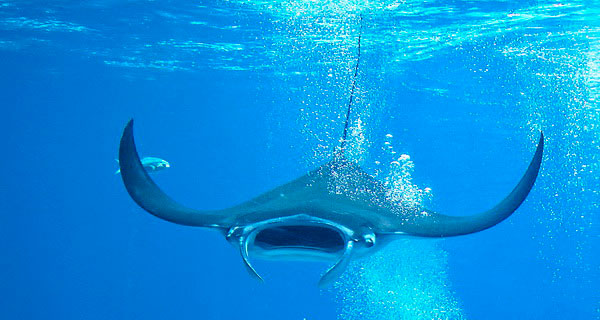
Bon Soong Wreck
The Bon Soong is an old tin dredger sunk in 1985 in the Andaman Sea. The wreck lies between the mainland and the Mu Ko Surin Marine National Park, just 13 kilometres from the coast of Khao Lak. Due to its proximity to the coast it's a very good spot to dive and enjoy excellent underwater photography. The wreck is easily visited with day trips by speedboats from Khao Lak and is also regularly dived during the liveaboard cruises to Similan and Surin Islands. The Bon Soong wreck lies on seabed at 20 metres deep with the upper part of the ship just 15 metres from the surface. The shallow waters and gentle currents make it an easy dive site suitable to all levels of divers. However the visibility is usually quite poor, normally between 5 and 8 metres, and enter inside can be dangerous. The ship rested for twenty years almost intact on the sea bottom as long as it was separated by the 2004 Asian Tsunami. Accordingly currently the wreck presents many sharp edges that could cause cuts. Since its sinking, the ship's remains were quickly covered by corals, anemones and sea fans, which soon attracted other marine life. Currently the wreck is permanently surrounded by fish and invertebrates. The remains are a perfect habitat for Nudibranchs, Ghost Pipefish, Gobies and Shrimps. Frogfishes and Lionfish are also common inside and around the wreck, as well as Moray Eels and Scorpionfish. Shoals of Trevally and Barracuda patrol the area. In the flat sandy bottom around the wreck are also reported sightings of meek Leopard Sharks.Read More
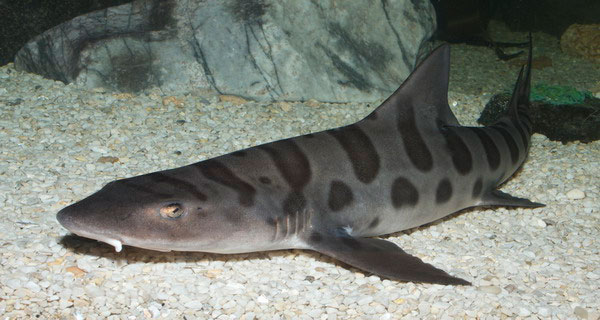
Site Features
- Position: About 13 Km west of Khao Lak coast
- Water Temperature: Between 26-29° C
- Surface Conditions: Calm to slightly choppy
- Current: Gentle
- Diving Depth: Maximum 20 metres
- Visibility: Usually quite poor between 5-8 metres
- Experience Level: Suitable to all levels of divers
Koh Tachai
Koh Tachai is a remote island which sits alone between the Similan Islands and the Surin Islands. In 2001, the Ministry of Agriculture has included it in the Similan National Park as eleventh island. The island is located about 60 north of Koh Ba-Ngu, the northernmost of the original nine islands that formed the Park, and about 37 Km south of the famous Richelieu Rock, which is part of the Surin National Park. Divers can get there with a diving day trip by speedboat from Khao Lak, about 100-minute boat ride, or with a liveaboard to the Similan Park, the site it's usually visited on the way to Richelieu Rock. There are several dive sites around Koh Tachai, but the most famous are two huge submerged plateaus on the south west corner of the island. Also known as the Twin Peaks, they are two crowned reefs of hard corals and scattered boulders that begin 14 metres below sea surface and then drop dramatically up to 40 meters deep on a sandy bottom. The top of the reefs are mostly covered by a beautiful mixture of hard corals with few patches of coral bommies, while the scattered boulders in the deeper regions are covered with gorgonian sea fans. The site is a challenge suitable to intermediate and advanced divers, due its currents are often strong and also because there aren't areas of the site shallower than 14 metres. However, as every diver knows, where there are great depths and strong currents there are larger fish. Its isolation and the wealth of plankton and bait fish attract Manta Rays and Whale Sharks, which are often spotted here especially during the high season, between February and April. Large shoals of Snappers and Barracuda are perpetually in hunting around the submerged reefs. Leopard Sharks are commonly found resting on the sandy bottom. Nurse Sharks are resident near the edge of granite plateaus or hidden into the swim-throughs between the boulders. Hawksbill Turtles are other usual visitors of Koh Tachai as well as Trevally, Unicornfish, Blue-dash and Yellow-backed Fusiliers. Koh Tachai will be closed to tourists indefinitely beginning 15 October 2016 for a program of recovery of damage caused by an excess of visitors. At the current date is not known whether will be also closed its diving sites.Read More
Site Features
- Position: About 60 Km north of Koh Ba-Ngu, 65 Km northwest of Khao Lak, 165 Km north of Phuket
- Water Temperature: Between 26-29° C
- Surface Conditions: Calm to slightly choppy
- Current: Can be very strong
- Diving Depth: Maximum 40 metres, minimum 14 metres
- Visibility: Ranges from good to excellent between 15-40 metres
- Experience Level: Suitable to intermediate and advanced divers
Koh Bon
Koh Bon is a remote and isolated island between the Similan and the Surin archipelagos. Since 2001, the island was included in the National Park Similan Islands as tithing island. The island is located about 22 north of Koh Ba-Ngu, the northernmost of the original nine islands. Divers can get there with diving day trip by speedboat from Khao Lak, about 80-minute boat ride, or with a liveaboard to the Similan Park, usually visited on the way to the famous Richelieu Rock in the Surin National Park. Koh Bon is famous for being one of the best places in Thailand to see the massive Manta Rays, especially from April to May, when come here to feed on Zooplankton, his favourite food, or be cleaned. The majestic animal is usually maintains a nearly stationary position on top of a coral patch for several minutes while to be cleaned by cleaner fish. There are two main diving sites in Koh Bon known as Koh Bon Ridge and Koh Bon Pinnacle. Unlike all others dive sites in the Similan Islands, which are made up by granite rocks, both Koh Bon sites are in limestone. Koh Bon Ridge is located in the southwest corner of the island, in a bay horseshoe shaped. The bay has weak currents making the site suitable even less experienced divers and ideal spot for night diving. The ridge slopes off to the west with a dramatic wall that descends up to 40 metres deep. The steep wall is well known as one of most vertical underwater drop off in all Thailand. The wall is covered with shaded soft corals and anemones. The limestone cliff is rich of marine life. Here you can see the majority of reef fish habitual in the Andaman Sea, such as Damselfish, Rainbow Runners, Moray Eels, Lionfish, Batfish as well as lots of invertebrates like Octopuses, Cuttlefish, Mantis Shrimps and Crabs. Leopard Sharks and Purple Fire Goby are also common here. However, undoubtedly the dream of every diver to Koh Bon Ridge is spotting the immense Manta Rays, which are often seen swimming in this deeper water. Koh Bon Pinnacle is located on the northwest corner of island, just a few hundred metres north of Koh Bon Ridge. In fact, there are two distinct underwater pinnacles here, and they are right next to each other. The first one has its top at about 18 metres below surface; the second one has its top at 24 metres deep. Both pinnacles drop to over 50 metres deep with two steep cliffs 32 and 26 meters height, which engage the divers in a long swim to reach the sandy bottom. Due their deep drop off and strong currents the two limestone cliffs are suitable to advanced divers. The walls of the pinnacles are mostly covered with hard corals and yellow soft corals. Unlike the other sites of the Similan consist of huge granite boulders, there aren't swim-throughs here but only some caves to explore in the deeper areas, where can be seen Nurse Sharks. The deep waters around the pinnacles are another good spot for see the majestic Manta Rays. Here also were reported sightings of Whale Sharks by some divers. However it is difficult to believe, because these meek sharks aren't regular visitors of Koh Bon. The other large marine species that swim in the deep waters around the pinnacles include White Tip and Black Tip Reef Sharks, Leopard Sharks and large Napoleon Wrasse.Read More
Site Features
- Position: About 22 Km north of Koh Ba-Ngu, 50 Km northwest of Khao Lak, 145 Km north of Phuket
- Water Temperature: Between 26-29° C
- Surface Conditions: Calm to slightly choppy
- Current: Can be strong
- Diving Depth: Maximum 40-50 metres, average 10-25 metres
- Visibility: Ranges from good to excellent between 15-40 metres
- Experience Level: Suitable to intermediate and advanced divers
We Sugest
Find the best Hotel in Phuket at "Lowest Price"
Find cheapest airfare to Thailand
Reach Phuket & Move Around







